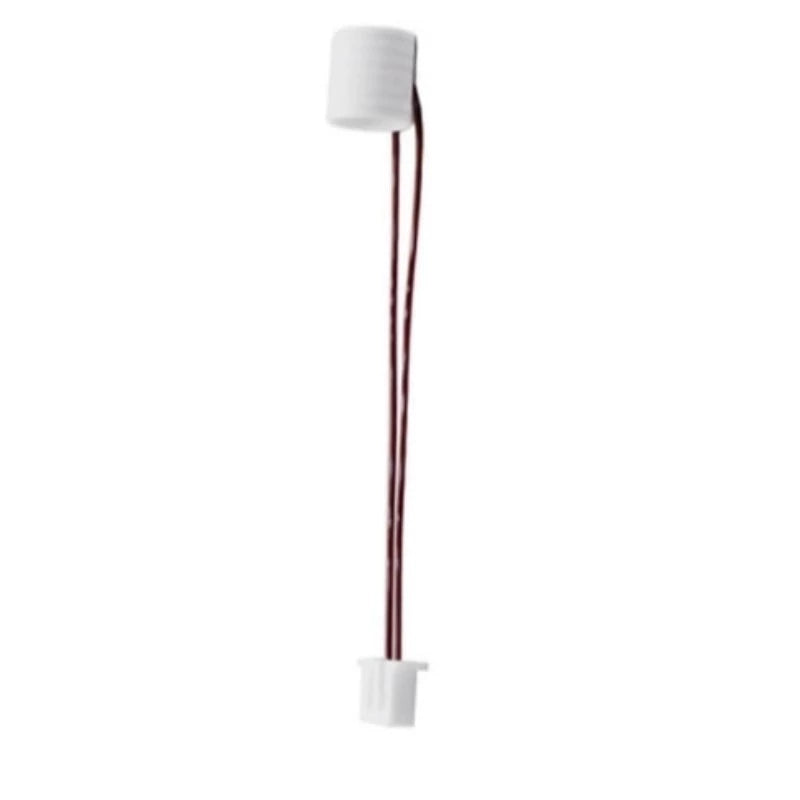Selling fast!
Get yours while you can.
$23.99
Couldn't load pickup availability
Secure your shopping experience with various safe and trusted payment methods.
Conventional heating elements often rely on metal cartridges and resistive coils. While these methods are perfectly adequate for many standard applications, they can experience limitations at higher temperatures or during prolonged print sessions. Ceramic heaters, on the other hand, excel where other materials may falter. Thanks to the intrinsic properties of ceramics—such as excellent heat tolerance, thermal conductivity, and resistance to wear—these heaters deliver consistent, uniform heat to your hotend.
Higher Temperature Threshold:
If you frequently print with materials like ABS, PETG, Nylon, Polycarbonate, or other high-temp filaments, you know how essential it is for the heating element to reach and maintain elevated temperatures. Ceramic heaters typically support higher operating temps than basic metal cartridges, ensuring that your hotend meets the demands of more advanced materials.
Enhanced Durability:
Ceramic components are highly resistant to thermal shock—sudden shifts between hot and cold that can crack or deform metal-based parts. This durability translates into a longer service life and fewer replacements over time. If your printer runs nonstop for hours or days, a sturdy ceramic heater can help you minimize downtime.
Rapid, Stable Heat-Up:
Waiting for your nozzle to reach the appropriate temperature can slow down your workflow, especially if you’re switching materials or batch-printing multiple items. Ceramic heaters warm up quickly and maintain consistent thermal output, so you can start printing sooner with more reliable temperature control. That stability also helps reduce hotend temperature fluctuations that might otherwise cause under- or over-extrusion.
A ring-shaped ceramic heater specifically designed for K1C (and potentially K1C MAX or other compatible models) offers a precision fit to the hotend assembly. Unlike one-size-fits-all cartridges, this design ensures:
As 3D printing evolves, so do filament formulations and user expectations. Many hobbyists and professionals are pushing the boundaries by printing larger items, stronger parts, or more complex geometries. One of the primary constraints in these scenarios is how quickly filament can be melted and deposited. By upgrading to a robust ceramic heater capable of higher wattages and temperatures, you open the door to faster extrusion rates:
Boost Print Speed:
With enough heat capacity, your hotend can melt filament more quickly, allowing you to increase travel and print speeds without sacrificing quality. Whether you’re rushing to finish prototypes or producing small batches of items for clients, a high-flow setup can be a game-changer.
Support Exotic Filaments:
High-temperature and composite filaments—like carbon-fiber–reinforced Nylon—often require consistent, elevated hotend temperatures. A ring-shaped ceramic heater supplies the stability and thermal headroom necessary to handle these premium materials, ensuring even melting and minimal clogs.
Smooth Layer Deposition:
Maintaining a uniform heat profile lowers the risk of partial clogs or inconsistent layers. This is especially important for intricate models with tight corners, overhangs, or delicate features, where even small temperature fluctuations can cause defects.
Ceramic heaters are known for their resilience. Where metal-based cartridges might degrade or rust over time, ceramics hold up against corrosion and repeated heating cycles. This inherent sturdiness translates into:
While any hotend component change involves some care, installing the K1C Ring-Shaped Ceramic Heater shouldn’t require advanced technical expertise. Basic instructions typically include:
If any step feels unfamiliar, consult your printer’s documentation or user forums, or seek assistance from an experienced technician.

At our Shopify store, we prioritize your safety and security. Here's how we ensure a secure shopping experience:
1. Secure Transactions: We use advanced encryption to protect your personal and payment information, ensuring it is safely transmitted and safeguarded.
2. Trusted Payment Gateways: Our store integrates with trusted payment gateways, ensuring your transactions are processed securely and efficiently.
3. Data Privacy: Your privacy is our top priority. We follow strict data protection policies to keep your personal information confidential and secure.
4. Secure Platform: Shopify provides robust security features and continuous monitoring against vulnerabilities, ensuring a safe shopping environment.
5. Verified Merchants: We are a verified merchant on Shopify, committed to providing authentic and high-quality products.
6. Transparent Policies: Our clear return, refund, and shipping policies provide peace of mind, knowing we stand behind our products.
7. Customer Support: Our dedicated customer support team is ready to assist with any concerns or questions you may have.
Shop confidently at our Shopify store, where your safety and satisfaction are our top priorities.
$23.99

Selling fast!
Get yours while you can.